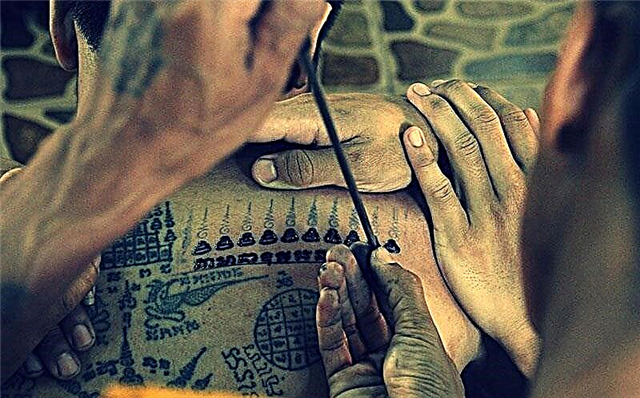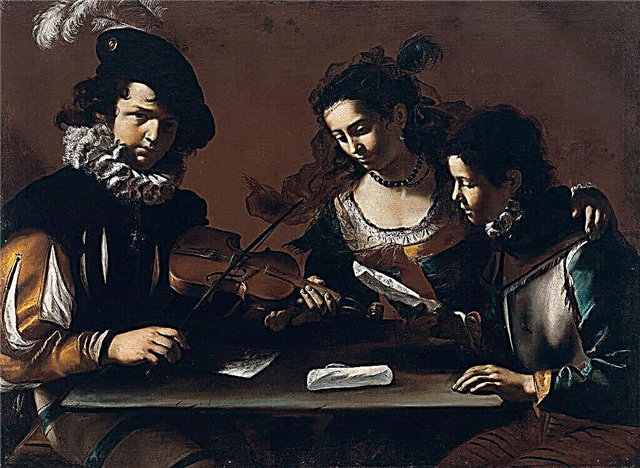The Thyssen-Bornemisza Museum in Madrid is a unique collection of genuine masterpieces of painting from the private collection of the family of Baron Thyssen-Bornemisza. Here you can see the canvases of great artists of various schools and trends, created over eight hundred years.
History
Three generations of the Thyssen-Bornemisso family took part in the creation of the museum's exposition. The foundation was laid by a successful German businessman, steel magnate August Thyssen. In 1910, by his order, Auguste Rodin creates several sculptural compositions. Until now, four figures occupy a place of honor in the modern collection, welcoming guests at the entrance to the museum.
The management of the family business and the passion for collecting works of art passed from August to one of his sons, Heinrich. He began collecting paintings by old European masters, buying them in America during the Great Depression and returning them to their historical homeland. By the time of his death in 1947, there were over 500 works. Under him, works of art were exhibited publicly for the first time. This happened in 1930 in Munich, since 1936 the exposition has been exhibited in a specially built gallery at the Villa of Heinrich in Lugano (Switzerland). In addition to paintings, he collected tapestries, antique furniture, sculptures, jewelry and much more.

After Henry's death, the collection was divided among the heirs. His youngest son, Hans, followed in his footsteps and put a lot of effort into uniting the collection. In addition, he replenished it with works of modern masters of painting: he bought paintings by the impressionists, avant-garde, hyperrealists, and so on. Like his father, Hans believed that masterpieces should be viewable by as many people as possible. Therefore, he constantly organized visiting exhibitions in all countries of the world.
With the increase in the collection, the question arose about the choice of a permanent place, tk. the gallery in a private villa did not contain all the works, and the conditions could not ensure proper preservation. From the many proposals received, the choice fell on the Villahermosa Palace (1771).

It is located in the heart of Madrid next to the famous Prado Museum. The Spanish government has guaranteed that the exposition will be awarded the status of a state museum. This was important, since it allowed to preserve the entire collection as a whole. Another reason that influenced the choice was the Spanish origin of Hans' wife - the famous model Carmen Cervera in the past, who was interested in placing the exhibition in her homeland.
The agreement was signed in 1988. Several years were spent on repairs, alteration of the palace into a museum, and in October 1992 it was opened for visitors. By 2004, the collection expanded with paintings belonging to Carmen Cervera. In addition, members of the Thyssen-Bornemisza family bought valuable canvases and exhibited them in the halls of the museum. Therefore, it became necessary to create new areas.
In addition to the main three-storey building, a new one was built nearby in a modern style. Now in the museum, in addition to demonstrating the permanent collection, various temporary exhibitions, seminars and other events are held.
Exposition

The permanent exhibition includes two separate collections: the baron and his wife. The first, consisting of 775 works previously owned by the baron, was bought by the Spanish state for $ 350 million. The other, which is the property of his widow, Carmen Cervera, and includes 304 canvases, was rented for a long time. It is on display in a new building.
The list of some artists overlaps, these are outstanding masters of the XIII - XX centuries. The paintings are arranged according to dates: from older to modern. Most of the canvases are painted in oil, there are also watercolors, pastels, works created using tempera and gold.
Conventionally, the exposure can be divided into four parts. The first unites paintings by Italian, German, Dutch, Flemish artists of the 13th - 15th centuries. These are landscapes, portraits, paintings on religious and mystical subjects: Niccolo di Tommaso "The Virgin and Child", Marco Zoppo "Saint Jerome in the Desert", Francesco Botticini "Saint Cecilia", Jan van Eyck "Annunciation" and others.

The second part contains works of the Renaissance, Baroque, Rococo, Classicism, covering the 16th - 18th centuries. Here you can see the works of such famous painters as: Tintoretto "The Meeting of Tamar and Judas", Titian "Maiden and Child", Rubens "Blinding Samson", Veronese "Portrait of a Woman with a Dog", Caravaggio "Saint Catherine of Alexandria", El Greco "Annunciation" and etc.
The third part combines paintings from the 19th - 20th centuries. They are represented by such trends as: impressionism, avant-garde, surrealism, symbolism, cubism. These are paintings by Claude Monet, Paul Cezanne, Auguste Renoir, Henri de Toulouse-Lautrec, Paul Gauguin, Pablo Picasso, Wassily Kandinsky, Marc Chagall. Famous canvases appear before admiring spectators: Van Gogh "The Potato Eaters", Edgar Degas "Dance in Green", Salvador Dali's "A Dream Caused by the Flight of a Bee", Pablo Picasso "A Man with a Clarinet" and many others.
The fourth part is made up of curious and little-known in Europe canvases by North American painters of the 19th - 20th centuries. These are, for example, the works of the abstract artist D. Pollock "Brown and Silver I", the representative of pop art R. Lichtenstein "Woman in the Bathroom" and so on. The works of American artists occupy four rooms of the museum.
Opening hours and ticket prices

The permanent exhibition works:
- Tuesday to Sunday: 10.00 to 19.00. Ticket price 12 €, for pensioners - 8 €, children under 12 years old admission is free. Audio guide rental - 1 € (available in Russian).
- Monday: from 12.00 to 16.00 (admission is free).
The museum is closed on January 1, May 1 and December 25. Last entry is one hour before closing time. Tickets for temporary exhibitions are sold separately.
Where is it located and how to get there
The museum is located in the center of Madrid on Paseo del Prado, 8.
Metro station closest to the museum: Banco de Espana, Line 2,
Buses No. 1, 2, 5, 9, 10, 14, 15, 20, 27, 34, 37, 41, 51, 52, 53, 74, 146, 150.











